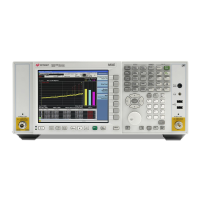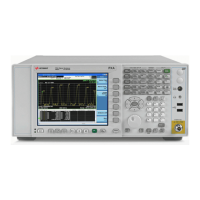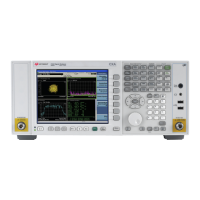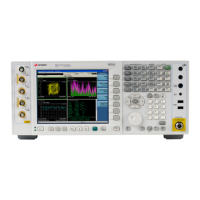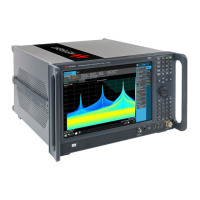3 VMA Mode
3.1 Digital Demod Measurement
# Name A/P Description Unit (if
any)
2 RMS ASK Error A RMS average of the ASK error at all symbol locations
Floating point number
%
3 Peak ASK Error P Largest ASK error at all symbol locations
Floating point number
%
4 Peak ASK Error
Index
P Location of the symbol that has the largest ASK error
5 Carrier
Frequency
Offset
A Carrier frequency error relative to the instrument's center
frequency
Floating point number
Hz
6 Modulation
Depth
A Modulation depth over the entire measurement area
Floating point number
%
7 Estimated
Carrier
Amplitude
A Estimated carrier amplitude over the entire measurement area
Floating point number
V
8 Amplitude
Ratio
A free decision distance in height of I Eye Diagram and calculated as
percentage of 2B/(A+B)
A and B are the maximum and minimum amplitude difference at
the decision point of I Eye Diagram. An ideal signal has a decision
height of 100%
%
9 Time Ratio A free decision distance in width of I Eye Diagram and calculated as
percentage of 2B’(A’+B’)
A’ and B’ are the maximum and minimum zero-cross time width in I
Eye Diagram. An ideal signal has a decision width of 100%
%
10 Modulation
Index Outer
A Defined as the measure of extent of outer amplitude variation
about an un-modulated carrier
Calculated as (VAmax – VAmin)/(VAmax + VAmin)
VAmax is the largest amplitude at crest. VAmin is the smallest
amplitude at bottom. Maximum amplitude difference A is equal to
VAmax – VAmin
%
11 Modulation
Index Inner
A Defined as the measure of extent of inner amplitude variation about
an un-modulated carrier
Calculated as (VBmax – VBmin)/(VBmax + VBmin)
VBmax is the smallest amplitude at crest. VBmin is the largest
amplitude at bottom. Minimum amplitude difference B is equal to
VBmax – VBmin
%
12 Modulation
On/Off Ratio
A Defined as the ratio of 20log10(VAmax + VBmax)/(VAmin +VBmin))
in dB
Vector Modulation Analyzer Mode User's &Programmer's Reference 200
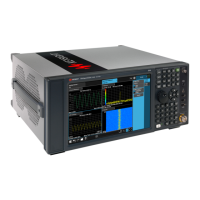
